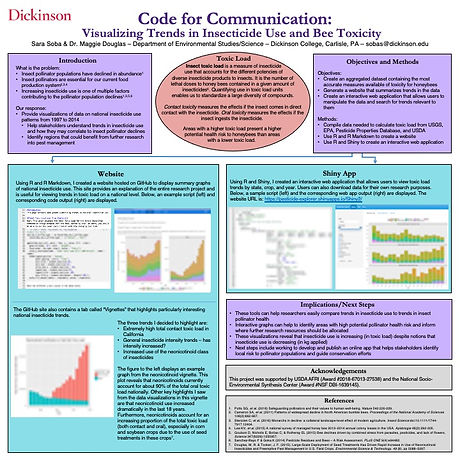Research
Code for Communication: Visualizing Trends in Insecticide Use and Bee Toxicity
In Summer 2018, I had the opportunity to work as a research assistant for Dr. Maggie Douglas in the Environmental Science Department. During the 10-week assistantship, I used R to visualize and analyze data on national insecticide trends. I then built an interactive web page for the research project and presented my research at the Pennsylvania Entomological Society Annual Meeting. Finally, I wrote a manual for future research assistants to continue website development.
See below for the research abstract and poster.
Research Abstract
Scientific studies from around the world have suggested that pollinator communities have decreased in abundance, diversity, and range. Insect pollinators, especially bees, are vital for our current food production system, and increasing insecticide use is one of the multiple factors contributing to pollinator decline. My research aimed to develop online tools for researchers and stakeholders to understand, visualize, and explore data on insecticide use patterns over the past two decades. My work contributes to recent efforts in open science to better share and communicate scientific findings. Enabling people to visualize trends in insecticide use can not only help us recognize how changes in insecticide use may affect pollinator health, but it can also help us gain insight into drivers of insecticide use and identify regions that could benefit from further research into pest management and insecticide mitigation.
Click the button below to explore the research website. NOTE: this website is still under development.


